In Ethiopia, WFP’s new digital system tracks and delivers to people facing severe hunger
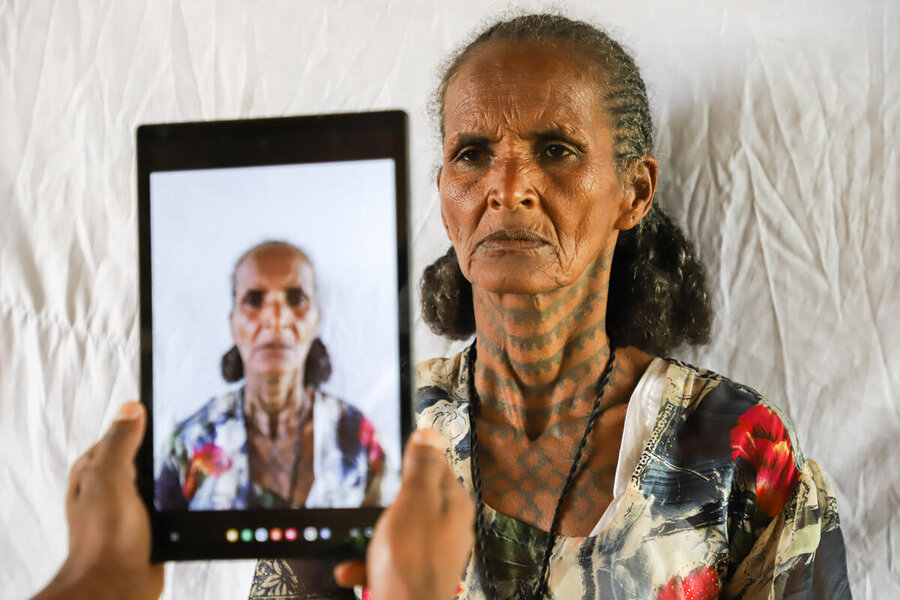
Zenebech Kahsay is relieved to watch her children play once again, their energy renewed at last by bread she’s baked after receiving a 15kg bag of wheat from the World Food Programme (WFP) at a food distribution in Tahtay Adyabo, in Ethiopia’s northern province of Tigray.
“My children were dizzy with hunger,” explains Kahsay as she grinds dark brown grains of wheat with a pestle and mortar. “Life was so difficult, we had one meal a day – most of the time it was a cup of porridge which we shared.”
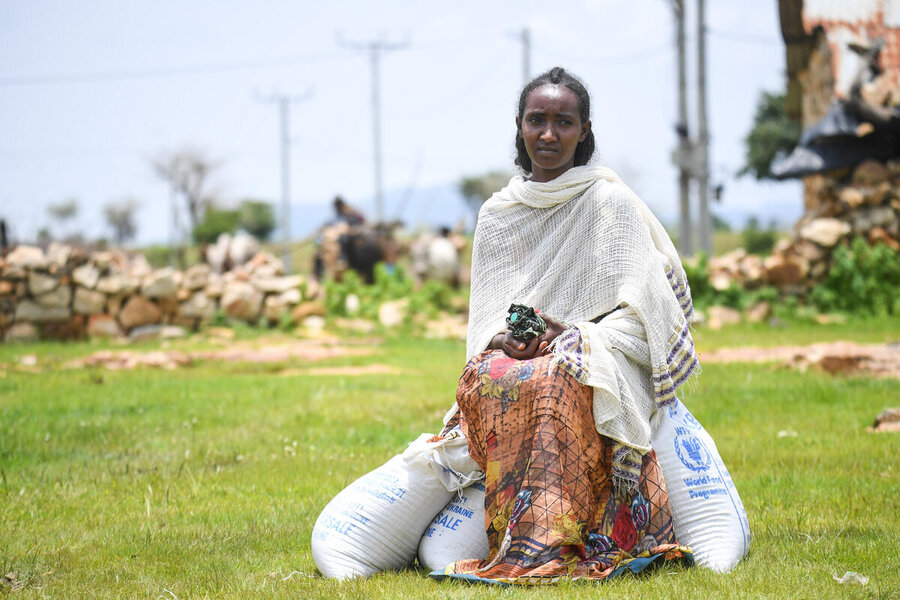
Kahsay speaks of life during WFP’s pause in food assistance, which stretched through half of 2023. Families were hit particularly hard. She was recovering from a two-year conflict amid drought, sickness and ever-increasing food prices.
Targeting the hungriest
Following reports of food being diverted at the beginning of last year, WFP teams across Ethiopia focused on reforming the humanitarian food assistance delivery system.
During the pause in food assistance, WFP developed more robust delivery mechanisms for its operations, a significant step in assuring the delivery of critical food assistance to the hungriest populations affected by drought, flooding, and conflict.
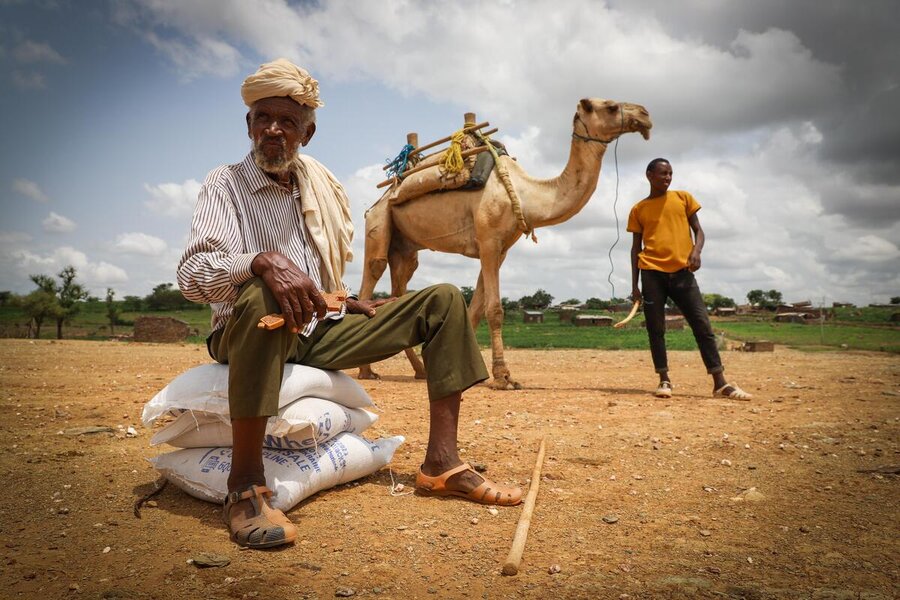
Kahsay was one of the first to receive food assistance from WFP last August, when WFP put its new delivery system to the test. “So far it’s good,” she says. “I can see that everyone here is the most in need of food support. People who are not included have also the chance to appeal.”
Sleeping on empty stomachs
Mulu Mehari, a grandfather, attests to the efficiency of WFP’s new distribution system: “It is so much smoother than before. With my own individual token I know the food is going to me and only me,” he says. “We were sleeping on empty stomachs, even drinking water was not easy to find. Now we see food coming – this is like a blink of light in the darkness.”
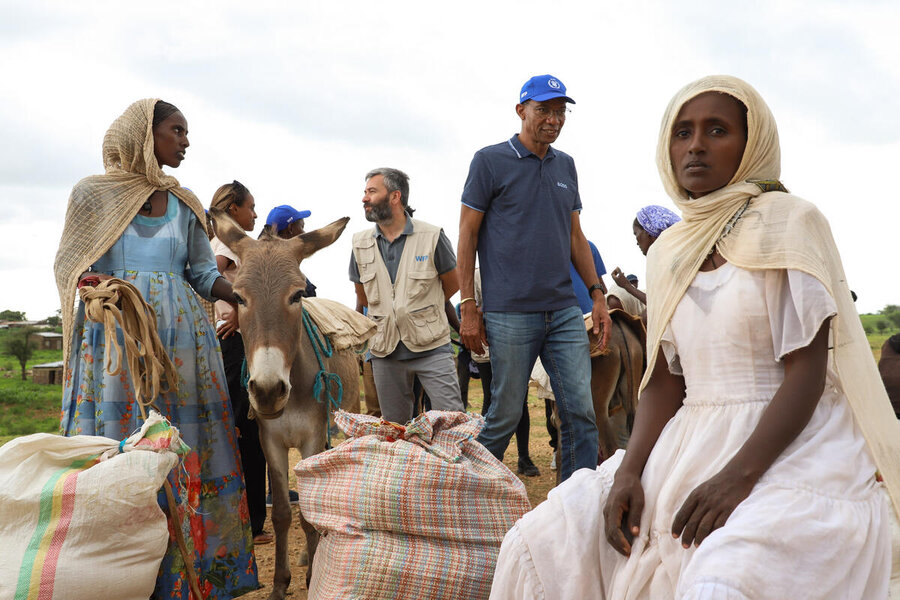
Since resuming food distributions in early December, WFP has delivered food to 1.2 million people in Tigray, Afar, Amhara and Somali regions. We are scaling up to provide critical food assistance to 3 million Ethiopians in coming weeks, almost 2 million of whom are in Tigray.
Half of the people WFP will deliver food to in Tigray fall under the shock-responsive component of the Government’s national safety-net programme.
But the needs are immense. Although, compared to this time last year, hunger levels have eased slightly (20.4 million in February 2023 compared to 15.8 million in February 2024, according to the Government of Ethiopia's most recent assessment), there are pockets of the country where people are in real danger of slipping into a humanitarian catastrophe.
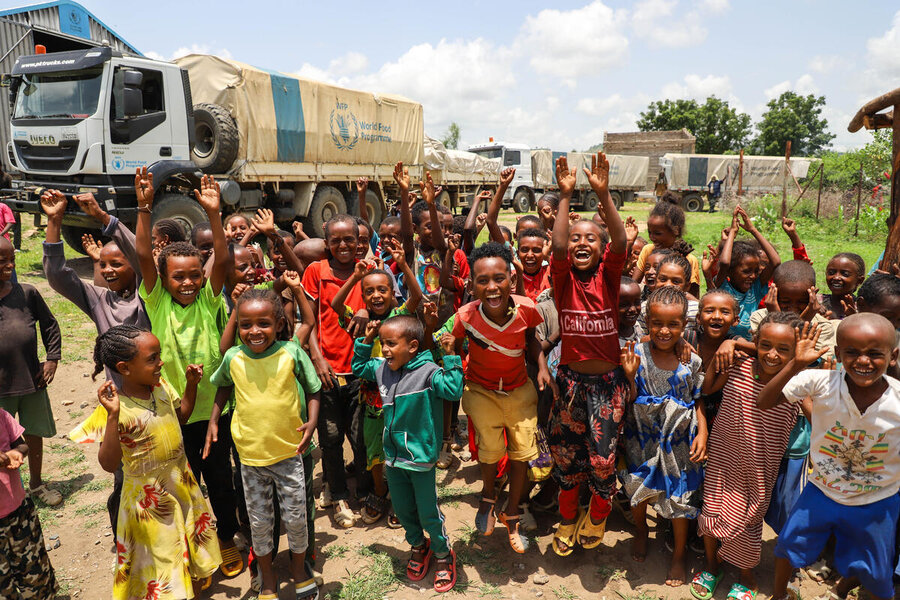
This includes over 4 million people who are internally displaced and 7.2 million facing high levels of acute food insecurity and needing emergency assistance. Resources permitting, WFP aims to provide food assistance to 40 percent of those 7.2 million while the Government and other partners will be supporting everyone else.
Over half of those needing food assistance are in Amhara and Tigray regions (51 percent). The need for food assistance remains high as climate change, conflict and economic shocks all continue to slow the recovery of livelihoods.
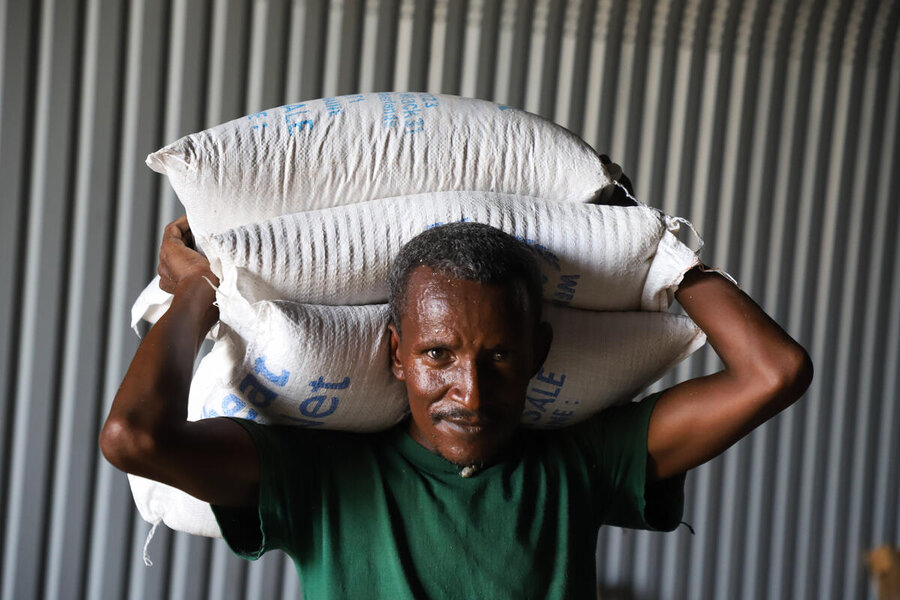
Meanwhile, crossing south over the Simien mountains into Amhara, usually productive areas of the region are also suffering from severe drought.
Tadel Gebeyehu and her family are returnees to Amhara after the war in Tigray. They still don’t have the means to put sufficient food on the table for the whole family. Gebeyehu has finally been able to collect food on behalf of her family of six, at the first WFP distribution in six months in Beyeda.
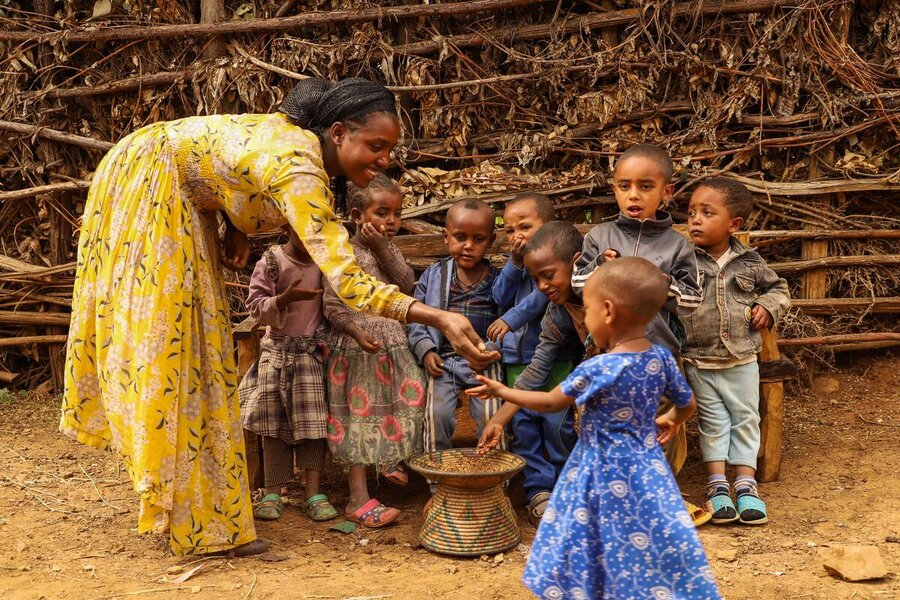
There are new food collection procedures – including scanning a unique code on each person’s ration card to verify them in the list, with food now being measured and scooped into containers brought by the families. Gebeyehu was relieved to take the food home to her children.
Feeling safe
“Life is quite challenging,” she says. “We are unable to establish a business or farm since there is no rain. We would have been able to work and support our families if the country had been at peace, but that is not the case right now. Thanks to the food aid we are receiving, we can finally eat.”
“The new distribution system I went through made me feel safe,” she adds. What's more, the use of digital ration cards has “prevented poorer people from being abused or left out.”
Photo: WFP/Claire Nevill
The new targeting approach in Ethiopia is community-led, designed and monitored by WFP, implemented by non-governmental cooperating partners and facilitated by the local government.
Inclusion and exclusion
The community uses clear inclusion and exclusion criteria to identify and verify those in greatest need. People are then digitally registered, with NGO partners recording their biographical data – so that they can easily be identified for food assistance.
After the initial list is drawn up and publicly displayed, the community members can appeal if they feel someone has been wrongly included or excluded. An appeals committee is present at every targeting and registration site to handle such cases.

Ageche Mulat sits on it. “We have been waiting for this... a committee dedicated to the careful selection of community members based on their genuine needs is a significant step,” says Mulat. “The exclusion process we undertook is crucial. We invested a lot of time and effort in discerning who should be excluded and who should be included.”
Selam Ambachew is a representative who sits on the targeting committee in Debark town. She was nominated by the community and her specific role is to look into the standard of living of everyone on the register. “The criteria that are being used are excellent,” she says.
“The process includes everyone in the community. The majority of people who live in this area are internally displaced... some come from Sudan, and some from neighbouring places.”
For now, communities such as Kahsay’s and Gebeyehu’s are safe in the knowledge that food is reaching the most vulnerable among them. But the running costs of WFP’s new system have pushed our Ethiopia operation into the red.
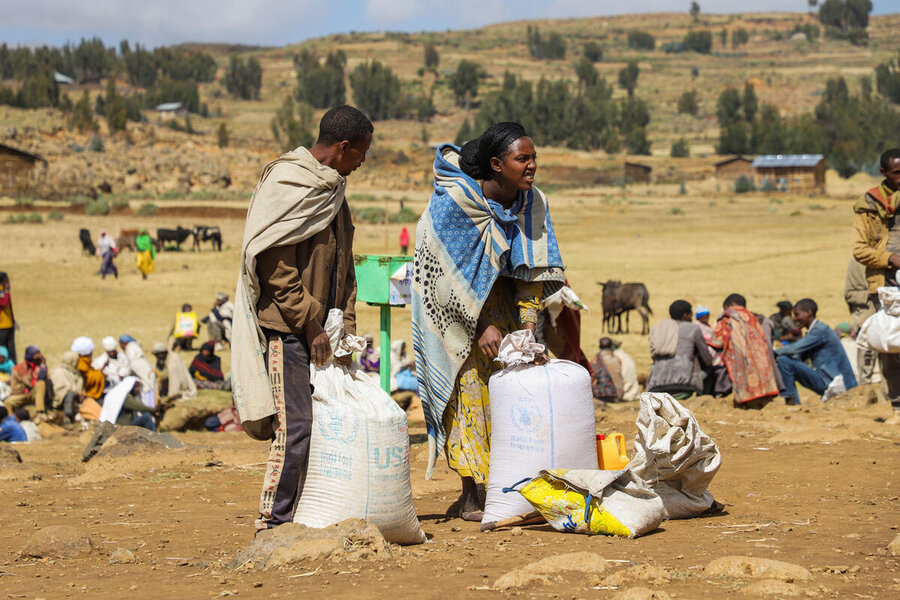
As the lean season looms closer and hunger levels increase, WFP urgently needs US$142 million to keep reaching and delivering assistance to the most vulnerable people in Ethiopia until June, and respond to the drought at scale.
If WFP and other food operators in the country do not get food assistance immediately to those who need it most, Gebeyehu, her children and many more facing the most extreme levels of hunger will slip further into danger. “We would not be alive today if we had not received this food help,” says Gebeyehu.
